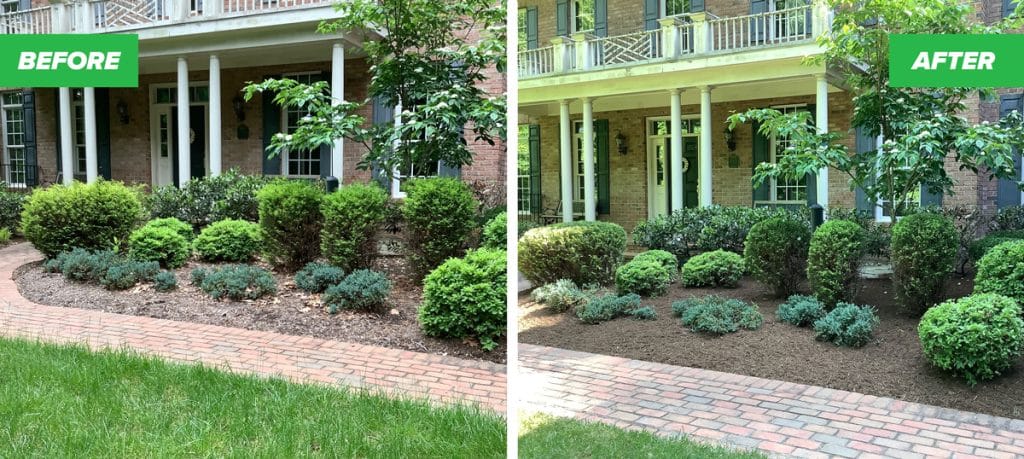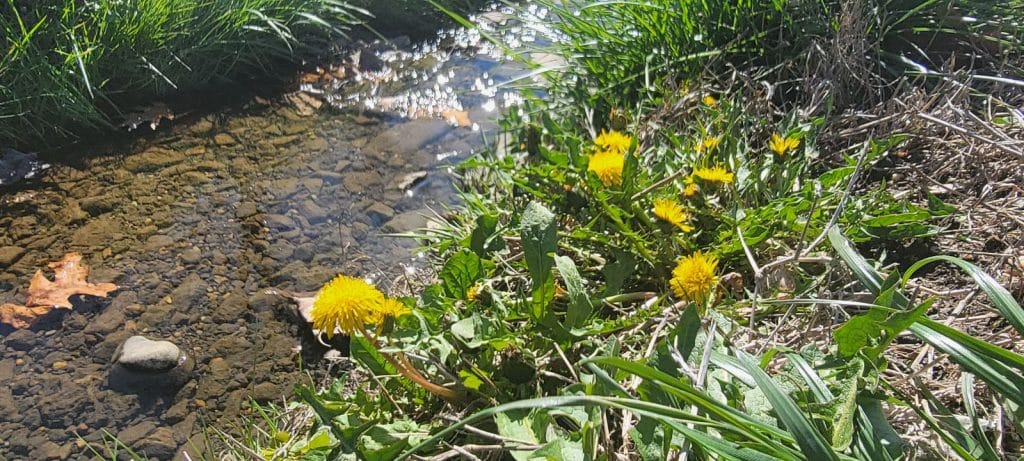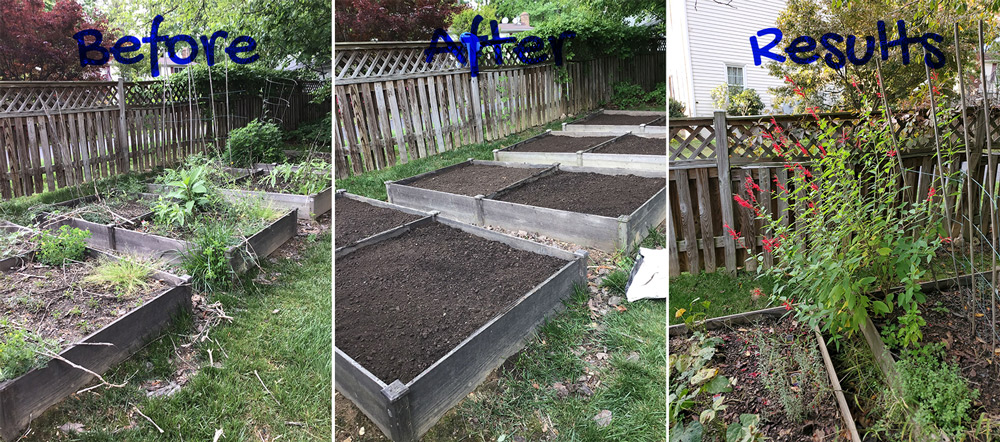Creeping bentgrass is a cool-season perennial grass often used as turf for outdoor recreational activities such as golf and lawn tennis. It is also used as forage for livestock. Since this grass is considerably high-maintenance, it is rarely used for home lawns. At MowCow Lawn and Landscape our professional teams of lawn care experts have decades of experience dealing with creeping bentgrass.
Many people consider this grass a weed because it can often establish itself in lawns where it was not planted, and crowd out the more desirable grass species. While people may appreciate cool-season grasses and warm-season grasses, they do not want to experience grasses that they do not want on their lawn.
Whether it is cool-season grasses or warm-season grasses, homeowners want to ensure that they have the right grass on their property. It makes sense; homeowners invest quite a great deal of their hard-earned funds to obtain the right lawn. If they notice that they have issues with cool-season grasses that seem like weeds, it can create immense frustration.
It is here that homeowners in the Burke VA area start to look for effective solutions. They might stumble on the idea of applying lime to the lawn.
This leaves people wondering when to apply lime to the lawn to get rid of this cool-season grass.
Creeping bentgrass grass thrives in wet and cool conditions. It grows rapidly in the spring season and looks similar to the rest of the grass on your lawn. It will grow faster than the rest of the other grass in your lawn and try to take over the entire area.
However, creeping bentgrass turns brown and appears dead during warmer seasons, while the other grasses remain green. This gives the entire lawn an unattractive appearance. This is the reason bentgrass should be identified and removed early when not needed. This simple guide discusses identifying bentgrass and applying lime to the lawn to spot the grass
Steps to Identify Bentgrass in Burke VA
Creeping bentgrass can be identified with some close and careful observation. Some of its characteristics include:
Narrow Flat Leaves: Creeping bentgrass is dull green with flat narrow leaf blades ribbed on the upper surface and smooth on the underside. The leaf blades are hairless, tapering to a pointed tip, and are rolled in the leaf bud. Between the leaf and sheath, which envelopes the stem and the leaf blade, is the ligule. The ligule is a white or greenish-white collar. Creeping bentgrass lacks auricles. Auricles are the lobes found at the base of the sheath or leaf blade in some other grass species.
Purple or Red Panicles: Panicles are slender seed heads. In creeping bentgrass, they are colored either red or purple. They are about 2 inches wide and 2-8 inches long.
Dense Turf: Creeping bentgrass grows from roots known as stolons. This grass has deep aggressive stolons that form an extremely dense mat of thatch. This thick layer of thatch is the major reason the grass is considered high maintenance. Regular detaching is necessary for the turf to strive and look its best. When left to grow, the grass may reach any length between 4-18 inches.
Cool Habitat: This grass comes from Eurasia and North Africa. It thrives in cool, humid, slightly acidic atmospheres. This is why the grass thrives in the Northeastern United States and does poorly in the humid U.S South.
How Do You Get Rid of Creeping Bentgrass?
Creeping bentgrass is very high maintenance. To keep it looking nice, you have to cut it very short. It also needs a lot of fertilizer and is susceptible to several kinds of diseases. It’s not surprising if you prefer to get this grass out of your lawn then deal with the stress of maintaining it. A few different options that you have when it comes to removing creeping bentgrass include:
Use a Non-Selective Herbicide To Kill Off The Whole Area
Herbicides containing glyphosate are good at killing bentgrass. Round-Up is a good example of this type of herbicide. However, these kinds of herbicides are not selective. They would kill off all the grass in the area, even those that are not bentgrass.
When applying this herbicide, it is recommended that you go about a foot outside of where the bentgrass is because the bentgrass has an above-grown root system called stolons that allow it to spread and creep into the healthy lawn area.
The disadvantage of using this method is that you stand the chance of killing off some of your good grass. There’s also the unavoidable problem of having a big brown ugly patch in your lawn all summer after you have killed the bentgrass with a herbicide.
Use a Selective Herbicide to Kill the Creeping bentgrass
A selective herbicide would kill just the creeping bentgrass you are trying to get rid of, leaving the rest of your lovely lawn grass intact. An example of such herbicide is Tenacity, but the product is expensive, and you may not want to spend that much on DIY
Dig Out All The Creeping Bent Grass
This method requires you to expend a lot of physical energy, but if done rightly, it works. It requires you to dig out the entire area where there’s creeping bentgrass. Dig deeply enough to get out the entire roots of the bentgrass and then fill up the topsoil with new sod.
Applying Lime to Lawn
Years ago, researchers found that creeping bentgrass thrives in acidic soils. This is the reason it needs a lot of fertilizer to thrive.
However, while people that want to grow bentgrass apply fertilizers to increase soil acidity, property owners who want to get rid of bentgrass use lime to increase soil alkalinity and reduce acidity. One problem with this method is knowing when to apply lime to the lawn to avoid messing up the pH level of your entire lawn.
As you can see, whether you are dealing with tall fescue, cool-season grass material, perennial ryegrass, Kentucky bluegrass, warm-season grass, turf-type tall fescue, fine fescue, or a drought-tolerant grass for your lawn in the Burke VA area, you need to work work with the right professionals.
The right professionals in Northern Virginia will understand your cool-season turfgrasses, deep root system matters, what a transition zone is, and how to treat creeping bentgrass in the Northern Virginia area.
Hire a Professional to Remove Creeping Bentgrass
Consult lawn experts for professional advice on how to handle the creeping bentgrass on your lawn. They would also offer advice on if or when to apply lime to the lawn, and proper watering and mowing practices to keep creeping bentgrass out of your lawn.
MowCow is a full-service lawn and landscape company who serves the Burke, VA area for over 35 years. If you are like most homeowners in this area, your lawn should be a source of pride. We take care of all of your yard needs, from mowing to edging and everything in between. We offer reliable, dependable landscaping services at competitive rates with no hidden fees.
If you are looking for help with fine fescue, creeping bentgrass, Kentucky bluegrass, perennial ryegrass, and cool-season turfgrasses in the Northern Virginia area, reach out to our team Mowcow today.
We are here to help with older lawns, bermudagrass, generally desirable grasses, a shallow root system, turf diseases, issues with heavy foot traffic, and more. If you seek to prevent creeping bentgrass on your wonderful lawn or golf course greens, reach out to our professionals today.






